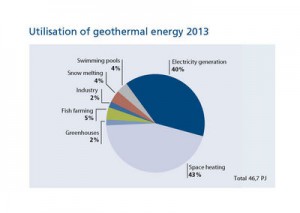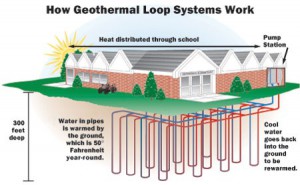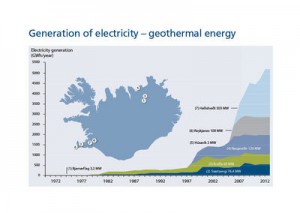Iceland and Geothermal Energy
During the course of the 20th century, Iceland went from what was one of Europe’s poorest countries, dependent upon peat and imported coal for its energy, to a country with a high standard of living where practically all stationary energy is derived from renewable resources. In 2014, roughly 85% of primary energy use in Iceland came from indigenous renewable resources. Thereof 66% was from geothermal.

From the picture above, we see that among all of the energy from geothermal, 43% of them goes to space heating, and 40% of them goes to generating electricity. In sum, these two sectors distributed over 80% of the nation’s geothermal energy usage, because electricity is the most useful energy for us to use, and space heating is also important for people to live in a cold environment.

This is a geothermal vertical loop system, basically, the liquid or air on the pipe gets heated from our earth, and then goes back to our house by using a heat pump. There are also some other kinds of loop, for examples, horizontal loop, slinky loop, pond loop and well loop. Which are installed depend on the situations.

Generating electricity with geothermal energy has increased significantly in recent years. As a result of a rapid expansion in Iceland’s energy intensive industry, the demand for electricity has increased considerably. From 1970-2013. The installed generation capacity of geothermal power plants totaled 665 MWe in 2013 and the production was 5.245 GWh, or 29% of the country’s total electricity production.
The idea of generating electricity from geothermal energy is similar to getting the heat. We just need to install a turbine and generator on the ground. And we can have the turbine spin through the steam on the lope and generate electricity from the generator.
Right now, Iceland is implementing The Iceland deep drilling project, which is a long term project focusing on harness geothermal energy below the several kilometers to reach hydrothermal fluids at temperatures ranging from 450°C to ~600°C. And with the energy, they will be able to generate much more electricity to use in the future.
References:
http://www.nea.is/geothermal/
http://en.wikipedia.org/wiki/Geothermal_power_in_Iceland
http://environment.nationalgeographic.com/environment/global-warming/geothermal-profile/
Recent Comments